Collections
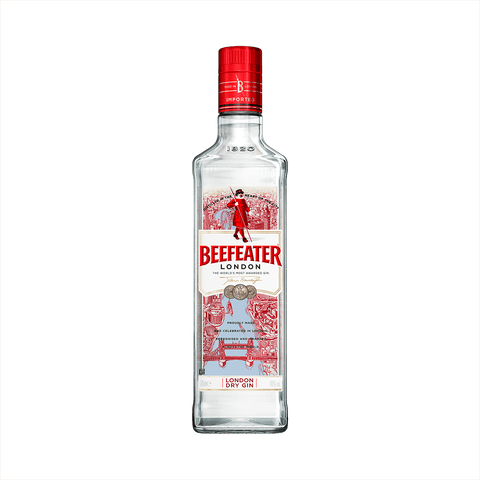
10 Essential Bar Bottles by Steve the Bartender

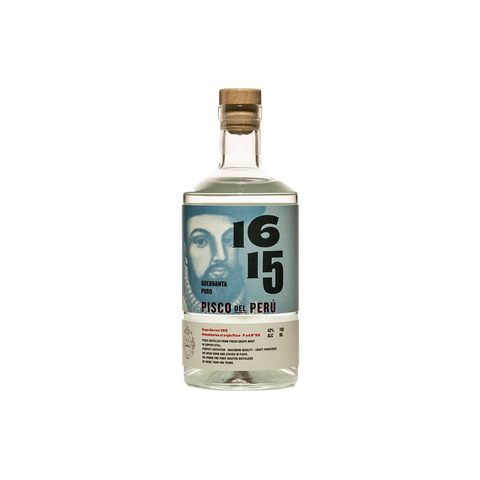
1615 Pisco
Experience the Spirit of Peru with 1615 Pisco. A Delightful Surprise Awaits.
What is 1615 Pisco?
1615 Pisco, hailing from the heart of Peru, is a breath of fresh air in the spirits market. This brand takes huge pride in producing exceptional Piscos, a type of brandy that has been savored in South America for centuries. Handcrafted using closely guarded traditional methods, 1615 Pisco reflects the rich cultural heritage of the region. The unique and distinct flavors of their Piscos range from the aromatic and floral, to the intensely fruity and complex, thereby catering to a wide spectrum of palates.
What is the history of 1615 Pisco?
The brand's name, 1615, pays tribute to the year Pisco production began in Peru, signifying a long and enduring tradition. A family-owned business, the Naylamp Pisco distillery, which makes 1615 Pisco, has been operating in Peru’s Ica Valley for generations. The attention to quality and craftsmanship in each bottle of 1615 Pisco is a testament to its rich past. Over the years, 1615 Pisco has gained international recognition, receiving numerous awards for their exceptional range. Today, 1615 Pisco continues to develop and refine their techniques to meet the discerning tastes of the global market while staying true to their roots.

A Collection from Truffles On The Rocks
Bottles for your cocktail creations
Recommendations from Jean-Felix, traveling bartender and cocktail enthusiast, and host of popular YouTube channel, Truffles On The Rocks.

Aberfeldy Scotch Whisky
The Unmatched Excellence of Aberfeldy Scotch Whisky
Bask in the comfort of Aberfeldy Scotch Whisky, a spirit unparalleled in its category, renowned for its honeyed richness and profound heritage that takes you back to the heart of Scotland.
What is Aberfeldy Scotch Whisky?
Aberfeldy Scotch Whisky is a prestigious and time-honoured Scotch whisky brand, originating from the fertile lands of Aberfeldy, in the heart of Scotland. They are makers of distinguished single malt whisky — a range that stretches from their classic 12-year-old up to rare, aged 40-year-old expressions. This unique whisky brand is highly recognized for its distinct and indulgent golden honey notes, delicately balanced with subtle notes of Scotch malt whisky.
What is the history of Aberfeldy Scotch Whisky?
Aberfeldy Scotch Whisky's proud heritage can be traced back to 1846, with the founding of Aberfeldy distillery by the Dewar family. With great skill and a pioneering spirit, the founders created a whisky-making process that ensures distinctive, beautifully rich single malts to this day. The distillery continues to draw its water from the Pitilie Burn, celebrated for its water rich in gold deposits. This has been vital for maintaining the whisky's renowned honeyed richness. Aberfeldy Scotch Whisky has withstood the test of time, consistently delivering the same exceptional quality and character that has helped the brand maintain its stature in the upper echelons of Scotch whisky.
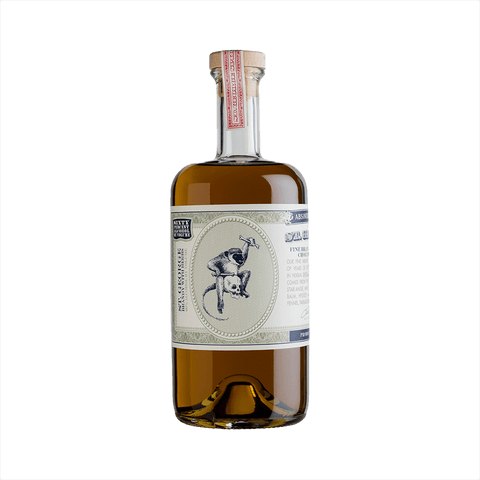
Absinthe
Enter the romantic world of absinthe with Curiada delivery to your door.
No spirit is more storied than absinthe. The "green fairy" has been a fixture of European literature since the 1700s. From Ernest Hemingway to Lewis Carroll, it has inspired, tickled, and pleased many an adventurous drinker looking to explore its unique flavor in cocktails and concoctions. Give these bottles a try to take your cocktailing to a new place.
What is absinthe?
Absinthe is a highly alcoholic spirit (45-74% ABV) distilled from botanicals like grande wormwood, green anise, and florence fennel. Nicknamed 'the Green Fairy', its anise flavor and emerald hue caused a stir in 19th century France and beyond.
Traditionally bottled without added sugar, it develops a louche effect when water is added - the liquid turns cloudy as essential oils precipitate. It originated in Switzerland in the late 1700s and rose to popularity through the Belle Époque period in France.
What are the different types of absinthe?
There are a few main styles of absinthe distinguished by their production method:
- Distilled - The base botanicals are macerated and distilled to create the spirit.
- Cold mixed - Oils are extracted from herbs then blended with neutral spirits.
- Aged - After distillation, it rests in wood, which adds complexity.
Based on the varieties of botanicals used, absinthe flavors can range from floral and herbal to spicy, citrusy or earthy. Common descriptors include licorice, vermouth, mint, coriander, parsley, fennel and black pepper.
How is absinthe made?
Authentic absinthe begins by distilling neutral alcohol from grapes or grains. The neutral spirit gets flavored through distillation or maceration of herbs.
Botanicals like wormwood, green anise, fennel and often coriander, give it its characteristic licorice flavor. Other herbs add complexity like hyssop, lemon balm, tarragon and petite wormwood. Distilled absinthe involves two steps. First, the herbs soak in neutral spirits, then distill it again with more herbs. This double distillation concentrates the deep, complex herbal essence. For cold mixed absinthe, botanical essences are extracted through distillation, then blended into a neutral spirit. Quality cold mixed absinthes use the same herbs as distilled but without a second distillation. Finally, some absinthes get aged in oak barrels or casks, acquiring subtle tannins and oxidized 'rancio' notes that enhance the woody, earthy flavors. Bottling proof typically ranges from 45 to 74% ABV. Sugar is not added.
How should I drink absinthe?
Absinthe should be enjoyed slowly and deliberately as a meditative experience. The traditional French method involves pouring 1-5 parts cold water into a glass with 1 part absinthe. The water unlocks aromas and flavors as the drink louches.
Higher quality absinthe warrants drinking slowly diluted with water. But simple granite distilled absinthes can work well in cocktails in place of other anise liqueurs like pastis or ouzo. Sip it slowly to experience its spectrum of herbaceous, floral and spicy flavors. Allowing the vegetal aromas to open up before each sip is an important part of the experience.
How does absinthe taste, smell and look?
Nosing it, expect aromatic herbs, black licorice, fennel and pine. The flavor evolves remarkably with water from spirity and burning to mellow green fruit, mint, coriander, vermouth and lingering numbing phenols.
A good absinthe coats the tongue before fading to black pepper and lemon on the finish. Its natural color ranges from cloudy white to amber red and bright emerald green depending on the botanicals. Diluting with ice water transforms its stark green into an opalescent pastel louche. Swirling unleashes floral, vegetal and cinnamon aromas for a complex nosing experience before sipping.
How do I mix absinthe into amazing cocktails?
Explore some of our most interesting absinthe cocktails.
Absinthe's strong, bitter herbal taste commands respect in cocktails. Here are tips for using it effectively:
- Substitute it for vermouth in vintage cocktails like the Sazerac or Martinez for a licorice twist.
- Rinse chilled glassware with it before building cocktails for subtle herbal aroma.
- Use sparingly and pair with fruit - a dash pairs wonderfully with citrus, pears, apples, plums.
- Stir with agave or simple syrup to offset bitterness.
- Sprinkle a sugar cube over it and slowly drip cold water for a show-stopping cocktail presentation.
- Pour into a coupe and top with Champagne for an eye-catching upgrade on classic Champagne cocktails.
What is the history of absinthe?
Absinthe originated in Couvet, Switzerland around 1792, home of Dr. Pierre Ordinaire, who created it as a digestif and health tonic using wormwood and other herbs.
Its anise flavor came from the addition of green anise, Florence fennel, and star anise. This gave absinthe its distinctive black licorice taste and opaque green color. It rose to popularity through the late 1800s Belle Époque period in France. Captivating artists and writers, it became a Bohemian symbol of creativity. By 1910, the Green Fairy had been demonized as a dangerous, addictive drug.
The temperance movement lobbied for its ban around 1915, accusing absinthe of psychedelic effects. This was likely overstated, as the high proof rather than wormwood caused inebriation. But vivid hallucinations captured in art fueled its mystic allure. Through the 20th century, bans persisted in Europe and the USA. There was a revival after quality standards and debunked myths allowed legal production again in the 1990s. Today, fine absinthes provide a nuanced herbal experience without reported psychotropic effects.
Why shop Curiada's selection of absinthe?
Curiada offers absinthes that capture the full experience of this legendary spirit. Get them delivered to your door in 1-7 days to explore a new world!

Absolut Vodka
Experience Absolut Vodka, Harnessing Authentic Swedish Purity and Simplicity
Infused with the spirit of Swedish legacy, Absolut Vodka offers an exceptional drinking experience centered around purity, quality, and eco-friendly processes. By keeping to its roots while embracing innovative methods, it represents a pristine union of modernity and age-old traditions.
What is Absolut Vodka?
Absolut Vodka is a renowned Swedish spirit brand, acclaimed for its silky texture and subtle flavor. Crafted from winter wheat and pristine country water, this premium vodka is distilled countless times to achieve its signature purity and smoothness. Key to the brand's identity is its continuous distillation process, where the vodka is distilled until all impurities are removed. Additionally, Absolut packages its products in recyclable glass bottles, championing sustainable practices to reduce environmental footprint.
What is the history of Absolut Vodka?
Absolut Vodka, born in Ahus, Sweden, stems from over 400 years of vodka-making tradition. The brand was established by Lars Olsson Smith in 1879 who introduced the continuous distillation method, producing a vodka with unparalleled purity. The unique one source production ensures that every drop of Absolut comes from one place - the little-known village of Ahus in Sweden. Over the years, Absolut Vodka has become internationally recognized, carving an indisputable position in the global spirits market, celebrated for its quality and commitment to sustainability.

Aged Cachaça

Aged Rhum Agricole

Agricole Rhum Blanc
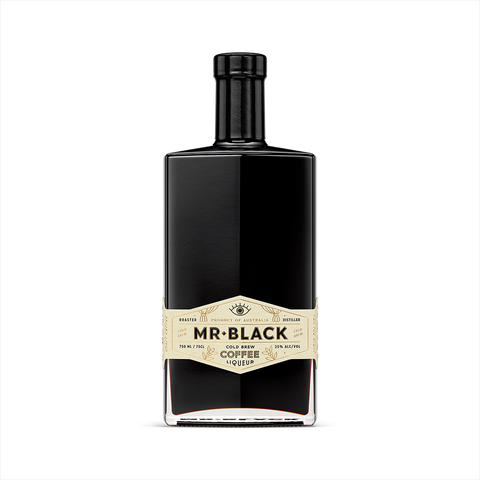
All Items
High quality spirits for your cocktails and home bar. Browse new arrivals and the always updating free shipping collection.

All Products

Almond Liqueur

Almond Syrup

Alpine Amaro
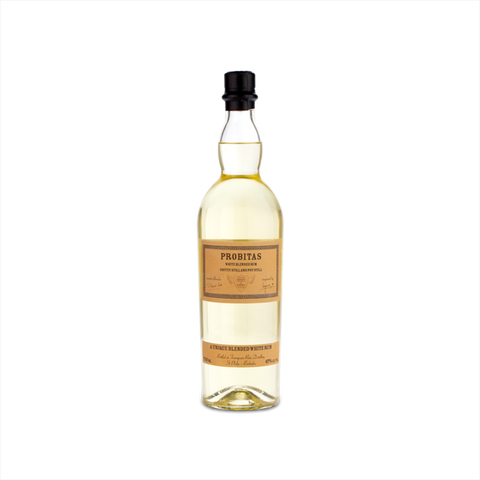
Altamar Brands

Amari & Aperitifs
Ready to level up your cocktails? Enjoy all that bitter has to offer with Curiada's wonderful amaro selection.
Amaro means bitter. Literally! It means bitter in Italian. And, for many of us, bitter, one of the five basic tastes, is not appealing on its surface. But, if I've learned anything from my coffee habit, bitter can be a delight, in and of itself, and the perfect complement to sweet to make wonderful concoctions, cocktail or otherwise. Explore what bitter can bring to your cocktails with Curiada's selection of amari.
What is amaro?
Amaro is a bitter Italian herbal liqueur, usually containing 20-35% ABV. The name means "bitter" in Italian. It dates back centuries as a digestive aid, with each brand featuring its own blend of botanicals, roots, and spices.
Traditional amari offer a complex medley of bitter flavours, followed by nutty, earthy sweetness. They are classified as bitters but often approach sweet vermouth in profile. Popular brands include Averna, Ramazzotti, and Fernet-Branca.
What are the different types of amaro?
There are several distinct styles of amaro defined by their flavor profiles and ingredients:
-
Alpine - Bright, floral, and herbaceous like Gran Classico, Braulio, and Ramazzotti.
- Fruit - Featuring notes of citrus and stone fruits like Averna, Lucano and Meletti.
- Spiced - Led by cinnamon, clove and anise flavors as in Nonino Quintessentia, Vecchio Amaro del Capo.
- Roasted Nutty - With prominent walnut and cocoa notes like Cynar and Amaro Montenegro.
-
Minty Herbal - Driven by menthol, saline and bitter roots like Fernet-Branca, Branca Menta.
How is amaro made?
Each brand closely guards their secret recipe, but production follows a similar process:
Neutral spirit is distilled from fermented grain or grapes. Various herbs, roots, peels, flowers, nuts and spices are macerated in the spirit to extract flavors and aroma compounds.
Common botanicals include gentian, rhubarb, chamomile, saffron, ginger, quinine, star anise, peppermint, myrrh, bitter orange peel and cinnamon. The ingredients macerate in neutral spirit for weeks to extract maximum flavor. The infused spirit gets combined with caramel coloring, sugar syrup and often grape spirit or wine before dilution with water to bottling strength of 20-35% ABV. Finally it is aged in steel or oak barrels for additional smoothing and maturation.
How should I drink amaro?
Amari shine when consumed neat at room temperature or over ice as an after dinner digestif. Savoring slowly allows their layers to unfold. The bitterness stimulates digestion while the sweetness provides balance.
In cocktails, amaro's herbal complexity enhances whiskey or gin. Only a small amount is needed in the recipe to provide intrigue. Sweeter fruit-forward amari also work well in place of vermouth in classics like the Negroni or Manhattan.
How does amaro taste, smell and look?
When served at room temperature, aromas of anise, licorice, mint, herbs, nuts and caramel rise from the glass. The first sip leads with strong bitterness that fades into aromatics of flowers, fruits, then lingering earthy sweetness.
Texture is light to medium viscosity. Most amari add caramel for a rich amber to chocolate brown color. But traditional mountain styles remain clear. As with any spirit, tasting amaro slowly allows its evolving layers to emerge. Bitterness stimulates saliva to awaken tastebuds for the sweet, complex midpalate and finish.
How do I mix amaro into amazing cocktails?
Explore our favorite amaro cocktail recipes.
Amaro's herbal bitterness enhances so many classic cocktails. Here are tips for using it:
-
Swap amaro for vermouth in spirit-forward cocktails like Negronis or Manhattans.
- Use alongside herbal liqueurs; amaro loves chartreuse, Benedictine, Genepy.
- Pair fruity amaro with berry and citrus flavors.
- Stir spiced amaro into autumnal bourbon cocktails featuring apple, maple, pumpkin.
- Add Angostura bitters on top of amaro for added depth.
-
Layer amaro and tawny port for an Italian twist on La Dominicana.
What is the history of amaro?
Monks and apothecaries across Italy and France developed digestive liqueurs made from local alpine herbs as early as the 11th century. Each monastery secretly guarded their recipe.
These early digestifs were lower in alcohol and straight bitter medicinal infusions taken by the spoonful. The first commercial aromatized wine-based amari emerged in the 1800s. Northern Italian brands like Fernet-Branca, Braulio and Cynar led the way alongside southern styles including Averna and Amaro Lucano. Many popular brands we enjoy today launched in the mid 1800s.
Post-war aperitif culture in the 1960s took advantage of amari's bitterness. Cocktails like the Negroni and Americano rose to prominence and gave amaro a starring role, which still shines brightly today.
Why shop Curiada's selection of amaro?
We focus on sourcing the very best classic Italian brands alongside creative contemporary amari from Italy and beyond. We highlight how unique botanical blends impart specific aromas that invite exploration. You'll discover renowned bottles like Nonino Quintessentia alongside unique, micro-production amari that bring something truly unforgetable to cocktails.
Dive into the wonderful world of amaro with Curiada delivery to your door in 1-7 days.
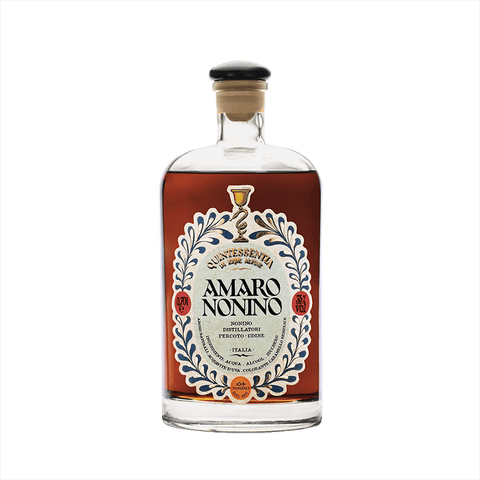
Amaro
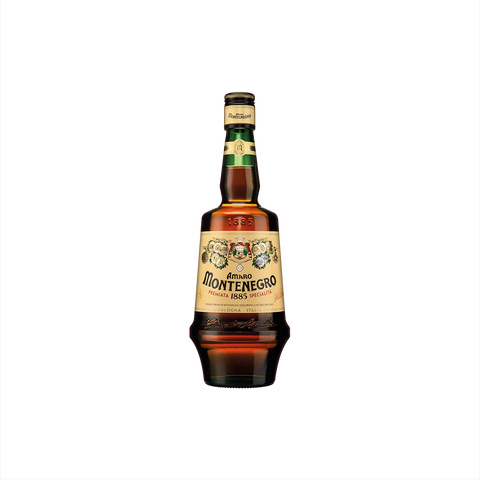
Amaro Montenegro Italian Liqueur
Unique Blend of Exotic Delight, Amaro Montenegro Italian Liqueur
Amaro Montenegro is an unparalleled enclave of taste and tradition, a true symbol of Italy's rich heritage of producing inspired liqueurs. The brand strikes a harmonious balance between its sweet, bitter, and citrusy profile, intricately assembled from forty world-sourced botanicals.
What is Amaro Montenegro?
Amaro Montenegro is a renowned Italian liqueur, produced in Bologna, Italy. Its uniqueness lies in its distinctive blend of forty botanical ingredients, painstakingly sourced from across the globe. The ingredients are meticulously processed to extract their flavors, creating an aromatic, herbaceous, and bittersweet liqueur. Used both as a digestif and a cocktail ingredient, Amaro Montenegro has gained international fame for its superb versatility and distinctive flavor profile.
What is the history of Amaro Montenegro?
Amaro Montenegro has a rich history that dates back to 1885 when it was first crafted by Stanislao Cobianchi in his small Bologna-based laboratory. Named in honor of the second queen of Italy, Elena of Montenegro, the liqueur quickly gained recognition across Italy, becoming a symbol of Italian craftsmanship. Even today, this iconic brand continues to uphold its century-old recipe, which has been passed down through generations, weaving a tale of tradition and meticulous craftsmanship. This enduring connection to its roots has made Amaro Montenegro a beacon of Italian heritage, fervor, and dedication to quality.
- Page 1 of 32
Gift message (optional)
